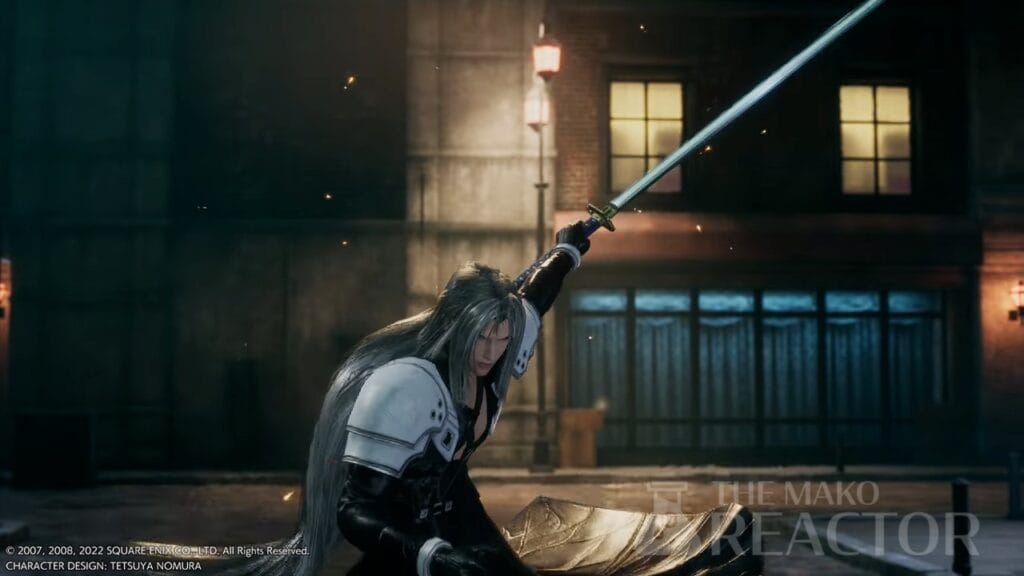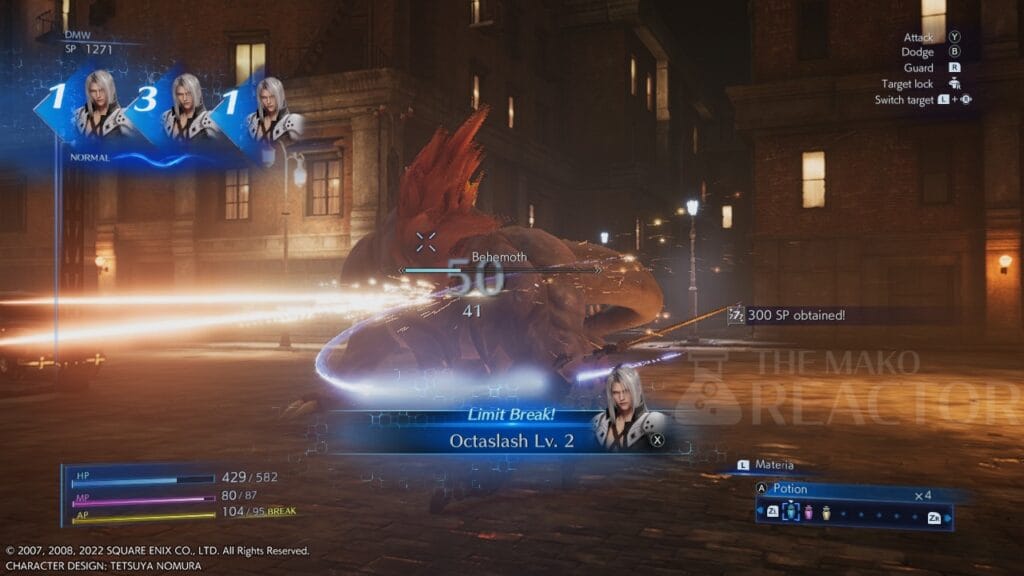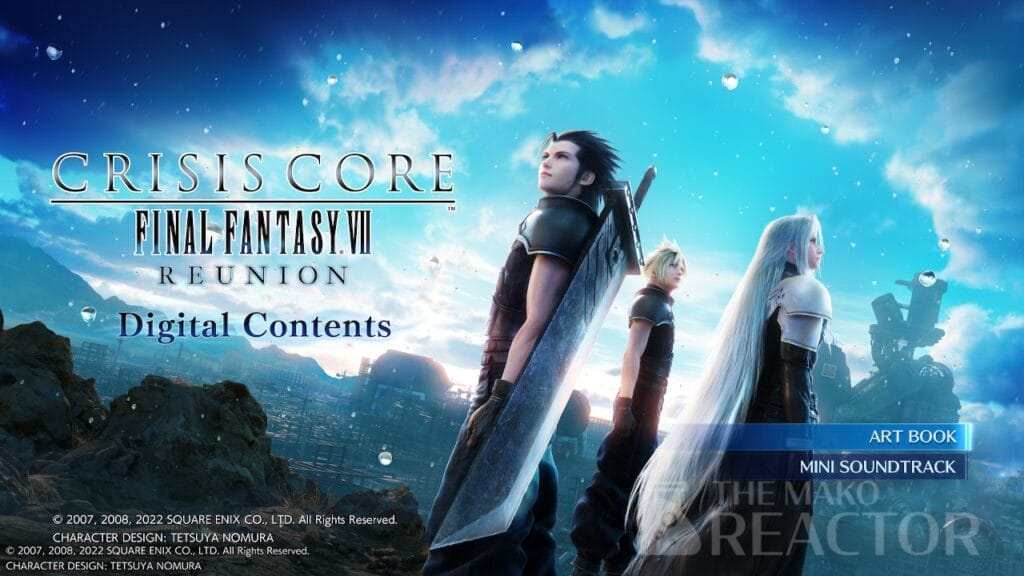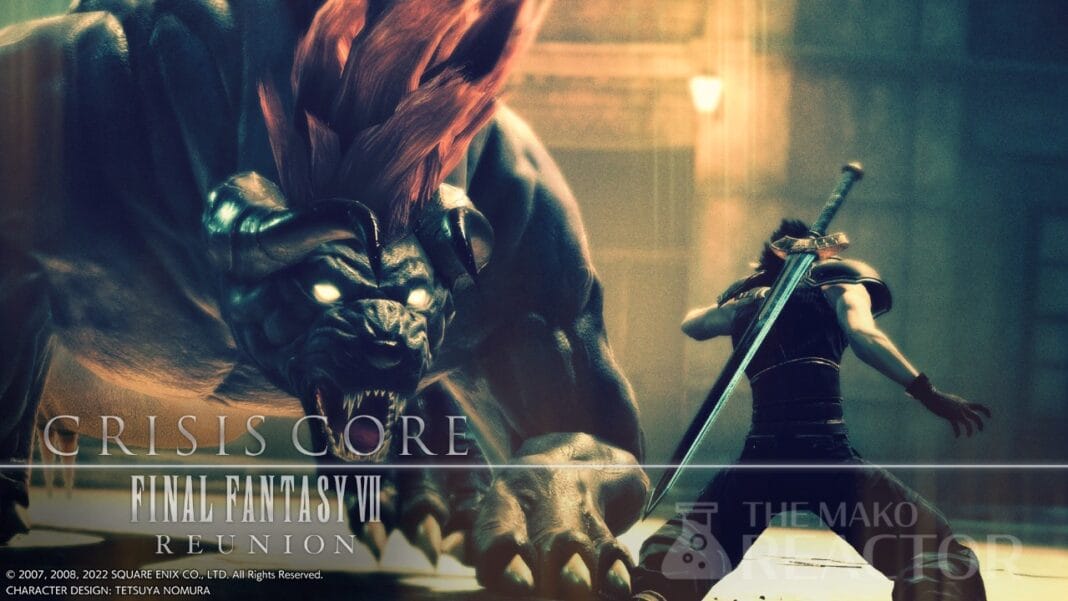Following the Crisis Core: Final Fantasy VII Reunion announcement, I was very excited to finally experience the game for the first time thanks to this remaster. Crisis Core is a prequel to Final Fantasy VII launching on Nintendo Switch, PC, PS5, PS4, Xbox Series X|S, and Xbox One next week in the form of this enhanced remaster. Thanks to an early review code provided by Square Enix, I’ve been playing Crisis Core: Final Fantasy VII Reunion on Nintendo Switch. Ahead of my full review, I wanted to cover the Switch port based on a few hours I’ve spent playing it both docked and handheld.

I usually try and cover every new game I’m interested in on both Nintendo Switch and Steam Deck as a fan of portable gaming. Since Crisis Core: Final Fantasy VII was originally a PSP game, I was hoping Square Enix would deliver a competent portable version. In the time I’ve spent with it on Nintendo Switch, Square Enix has delivered at least when playing handheld. Crisis Core: Final Fantasy VII Reunion on the go makes me hope we eventually get a Switch version of Final Fantasy VII Remake. I already replayed that on Steam Deck recently, but would definitely be up for revisiting it on Nintendo Switch down the line through a potential port.
Crisis Core: Final Fantasy VII Reunion Nintendo Switch visuals docked and handheld
Crisis Core: Final Fantasy VII Reunion’s resolution and frame rate targets across different platforms were officially revealed, but the build I have for review paints a different picture. Having spent a few hours with Crisis Core: Final Fantasy VII Reunion both docked and handheld, I’m impressed with the port handheld, but disappointed in how it looks docked. I can’t pixel count, but I wouldn’t recommend this version over the others if you have access to another system and want to play it on the big screen. If you want to only play it handheld, Crisis Core: Final Fantasy VII Reunion looks good and runs mostly well with its dynamic resolution. I noticed a few instances of slowdown or cut-scene stutter both docked and handheld though. While 60fps would obviously be better, many people including myself played and enjoyed Final Fantasy VII Remake on PS4 Pro which had that game running at 30fps.

While a softer image was expected on Switch, my biggest complaint is in how the post-processing and upscaling of certain elements is handled. The hair on character models looks quite bad or blurry in parts, and this is more noticeable docked than handheld. As shown in the comparison below, despite the 720p 30fps mention for docked and handheld, there are scenes where the resolution and clarity are both quite different between docked and handheld.


Crisis Core: Final Fantasy VII Reunion gameplay and structure
I never owned a PSP and Crisis Core wasn’t available digitally on PS Vita before in North America. My first experience with Crisis Core began when I got my Switch review code for this remaster. So far, it feels like the perfect game to play while waiting for Final Fantasy VII Rebirth. In the early hours, Crisis Core: Final Fantasy VII Reunion’s combat feels great, and Square Enix has done a fine job in making this feel like a good complement to Final Fantasy VII Remake. The menus and interface alongside the visuals make this remaster feel like a true modern Final Fantasy VII experience. One aspect that makes it shine on Nintendo Switch even more, is in its structure. Crisis Core: Final Fantasy VII Reunion feels very much like a modern coat of paint on a game designed for a portable. The shorter missions suit the pickup and play nature of the Switch.

Crisis Core: Final Fantasy VII Reunion Nintendo Switch features
On Nintendo Switch, Crisis Core: Final Fantasy VII Reunion has great HD Rumble support. It also supports the system’s native video recording. I don’t know if capture will be blocked later on in the game as is the case with some releases, but it works for now. The HD Rumble is worth highlighting because I love when developers utilize this to make the Switch versions feel like they aren’t an afterthought. I’m interested to see if the PS5 version has proper DualSense haptics and adaptive trigger support when I get my hands on that version.
Crisis Core: Final Fantasy VII Reunion Digital Deluxe Edition contents
I also have access to the Crisis Core: Final Fantasy VII Reunion Digital Deluxe Edition content pre-release. This is a mini soundtrack and “Heroes Past and Present The Art of Crisis Core: Final Fantasy VII” digital artbook delivered together in a single standalone app on Nintendo Switch. Considering the price difference and the fact that this isn’t the complete soundtrack, I don’t think this is worth buying over the standard edition since you can just buy the full soundtrack later on digitally when Square Enix releases it. Screenshots and video recording are blocked in this app as of this writing.

After being disappointed when Final Fantasy Type-0 HD skipped PS Vita years ago, it is good to see that the Switch keeps getting competent Square Enix conversions simultaneously with the other platforms. While I still need to finish Crisis Core: Final Fantasy VII Reunion for my full review, I’m more than pleased with how good it looks and feels handheld on Nintendo Switch. I’m looking forward to trying it out on other platforms closer to launch as well. Stay tuned for my full review in the near future.




